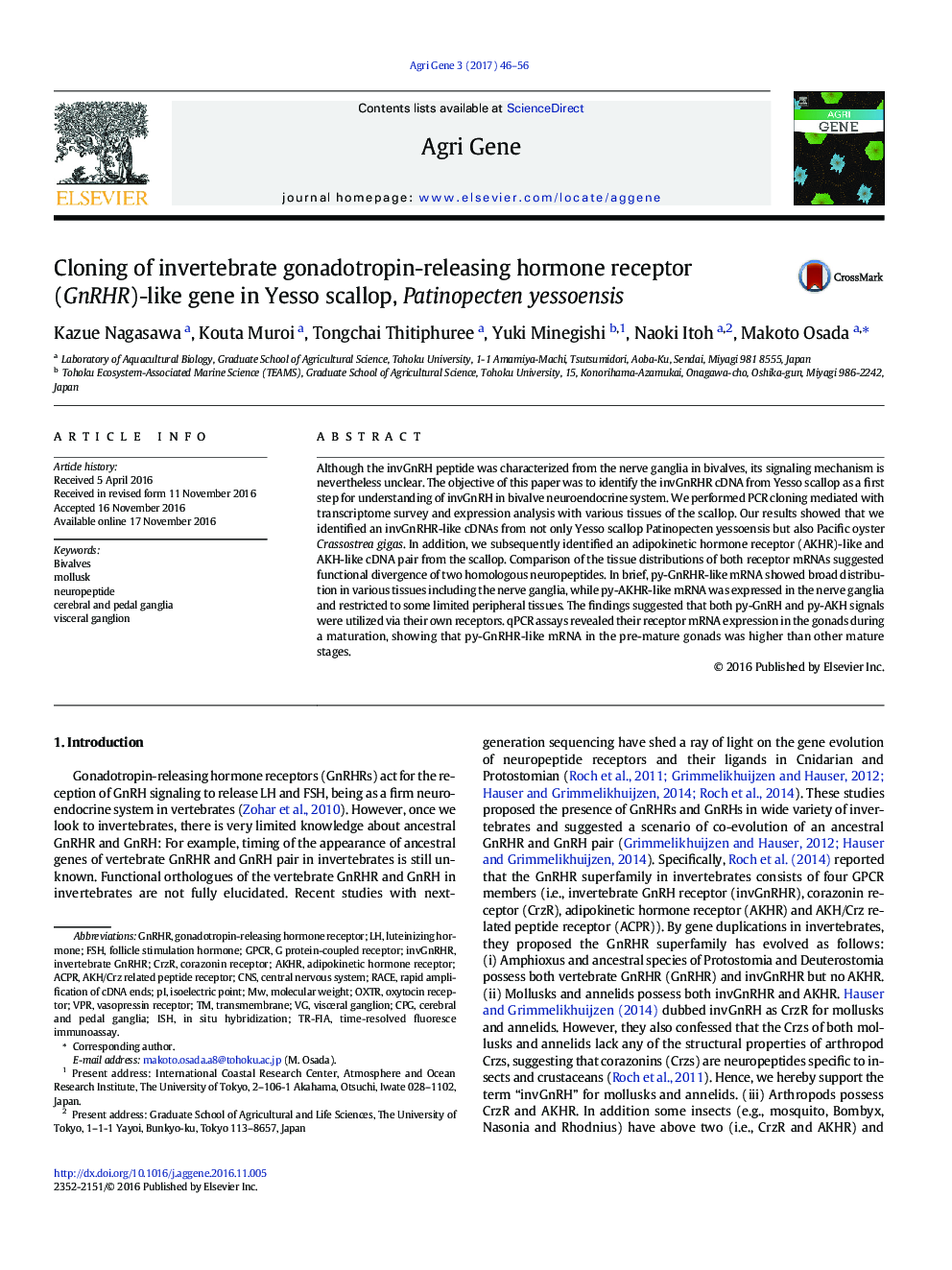| Article ID | Journal | Published Year | Pages | File Type |
|---|---|---|---|---|
| 5588865 | Agri Gene | 2017 | 11 Pages |
Abstract
Although the invGnRH peptide was characterized from the nerve ganglia in bivalves, its signaling mechanism is nevertheless unclear. The objective of this paper was to identify the invGnRHR cDNA from Yesso scallop as a first step for understanding of invGnRH in bivalve neuroendocrine system. We performed PCR cloning mediated with transcriptome survey and expression analysis with various tissues of the scallop. Our results showed that we identified an invGnRHR-like cDNAs from not only Yesso scallop Patinopecten yessoensis but also Pacific oyster Crassostrea gigas. In addition, we subsequently identified an adipokinetic hormone receptor (AKHR)-like and AKH-like cDNA pair from the scallop. Comparison of the tissue distributions of both receptor mRNAs suggested functional divergence of two homologous neuropeptides. In brief, py-GnRHR-like mRNA showed broad distribution in various tissues including the nerve ganglia, while py-AKHR-like mRNA was expressed in the nerve ganglia and restricted to some limited peripheral tissues. The findings suggested that both py-GnRH and py-AKH signals were utilized via their own receptors. qPCR assays revealed their receptor mRNA expression in the gonads during a maturation, showing that py-GnRHR-like mRNA in the pre-mature gonads was higher than other mature stages.
Keywords
ISHGnRHRFollicle stimulation hormoneAdipokinetic hormone receptorTR-FIAGPCRCpGAKHRACPRIn situ hybridizationVprOxtrrapid amplification of cDNA endsCNSBivalvescentral nervous systemtransmembraneRaceMolluskIsoelectric pointNeuropeptideluteinizing hormoneFSHMolecular weightoxytocin receptorgonadotropin-releasing hormone receptorVasopressin receptorG protein-coupled receptor
Related Topics
Life Sciences
Agricultural and Biological Sciences
Animal Science and Zoology
Authors
Kazue Nagasawa, Kouta Muroi, Tongchai Thitiphuree, Yuki Minegishi, Naoki Itoh, Makoto Osada,
